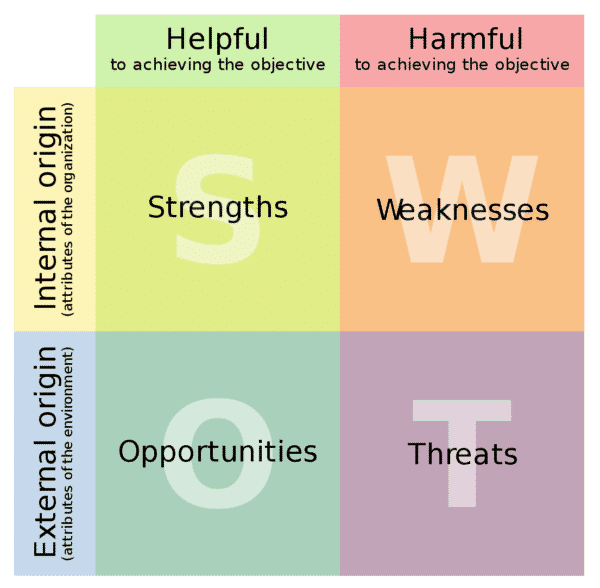Enterprise Software Selection: Discovery
In our last post, we wrote about some things to consider in addition to cost when selecting enterprise software. In the next few posts, we will look at the phases of a typical software selection process and the deliverables that are produced at each phase. This week, we look at the first phase of enterprise software selection, the discovery phase.
The Five Phases
There are five phases in a typical software selection process, and each phase produces one or more deliverables as follows:
Discovery
At SYTE there are two things that we typically like to start with when guiding a client through a software selection process. The first is a SWOT (Strengths, Weaknesses, Opportunities, and Threats) analysis, and the second is a process map of a client’s “as-is” business processes.
The goal is two-fold. First, we’re looking to create clarity about a business’s key strengths and weaknesses, and we are also looking to identify and map a business’s key processes. This sets the stage for a successful software selection process and lays the groundwork for software implementation when the time comes.
SWOT
At its best, enterprise software serves to amplify a business’s strengths and mitigate its weaknesses. Therefore, having a clear picture of your organization’s strengths and weaknesses is critical to a successful selection process. A SWOT analysis is simply a tool that helps an organization see its strengths and weaknesses by placing them in a matrix like this one:
A SWOT analysis provides an opportunity for a leadership team to really discuss and focus on a business’s key characteristics and issues.
It’s not the purpose of this post to describe in detail how to do a thorough SWOT analysis. There are many, many how-to articles on SWOT analyses on the internet. One of the best is an article by Mind Tools that explains the step-by-step process and includes a handy worksheet to fill out.
As-Is Business Processes
The second thing that we do with clients early in the selection process is to create an “as-is” business process map with them. This work is an important first pass at establishing requirements for the software selection process, and it becomes part of a detailed process description that informs software implementation.
We have written extensively on the whys and hows of process documentation. See the following posts:
- 3 False Assumptions About Business Processes and ERP
- Why Bother Documenting As-Is Processes?
- Business Process Regimentation-Is It Worth Giving Up My Ad Hoc Systems for ERP?
- The Four Core Processes Every Business Should Document
- How to Conduct a Business Process Assessment
These articles explain the importance of process analysis and describe how to conduct a business process assessment. In an upcoming article, we will actually walk through what it’s like to create a process map with a client. Look for that article in November.
Need help conducting a SWOT analysis or creating an “as-is” process map for your business or organization? Contact us. We can help, and that first call is on us.
ERP Readiness Self-Assessment
Is your organization ready for a new or upgraded ERP solution? Find out with this complimentary self-assessment.
Doing Business Better
You strive for excellence, believe in your people, and want to do things right the first time. And you know that you need help to get to the heart of your business challenges and make the best choices for the future of your privately held manufacturing and distribution company. That’s where we come in.
We help you focus and find exactly the right path to accelerated growth and sustainable success — from your people to your processes to your ERP software.




